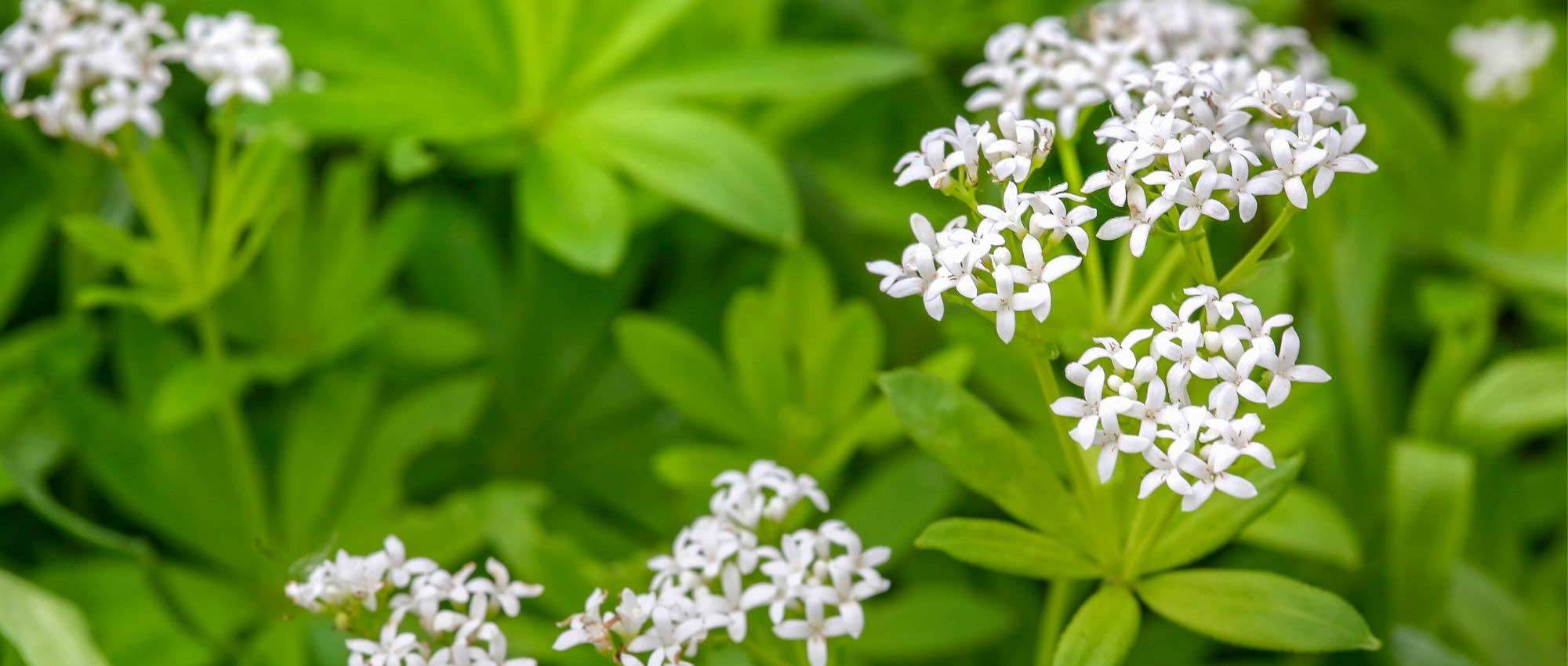
Perula: planting, cultivation, and care
Contents
The Perula in a nutshell
- Sweet woodruff makes a charming groundcover in woodland areas
- Its soft green foliage is arranged in a star shape along the stems
- In spring, it produces a lovely light white flowering
- It has a very natural and wild style!
- Closely related, Galium verum bears a multitude of yellow flowers in summer
A word from our Expert
Sweet Woodruff, also known as Galium odoratum, is a lovely perennial that produces small, delicate white flowers in spring. It is also appreciated for its superb star-shaped, light green foliage. This woodland perennial has all the charm of wild plants! Lady’s Bedstraw, or Galium verum, is a closely related plant that bears a multitude of small golden-yellow flowers in summer.
Sweet Woodruff is a perfect groundcover for naturalistic and shaded gardens. It beautifully dresses the base of trees and bushes, adding brightness. You can also plant it in a shaded rockery or at the foot of a north-facing wall. Galium verum, on the other hand, prefers sunny, well-drained soils. It can be part of a rustic and wild garden scene. Sweet Woodruff and Galium are low-maintenance plants! Once planted, they take care of themselves and are not susceptible to diseases or pests.
In addition to its ornamental qualities, Sweet Woodruff is a medicinal plant: it can be harvested, dried, and consumed as an infusion, or used to flavour drinks and desserts.
Description and Botany
Botanical data
- Latin name Galium sp.
- Family Rubiaceae
- Common name Aspérule, Gaillet, Reine-des-bois, Thé suisse, Petit muguet...
- Flowering printanière (Galium odoratum) ou estivale (Galium verum)
- Height jusqu’à 50 cm
- Exposure ombre ou mi-ombre
- Soil type frais, humifère
- Hardiness - 20 °C
Asperulas and gaillets comprise nearly 660 species of herbaceous annual or perennial plants. They grow wild in temperate regions of both hemispheres. Sweet woodruff, for example, can be found throughout Europe and into Asia, and it has even naturalised in some localities in the United States and Canada. It is easily found in French forests. The Galium verum, on the other hand, primarily grows in open environments, in meadows, in fallow land, or along paths. In France, one can also find in the wild the cleavers (Galium aparine), a plant covered in small prickles that allow it to cling to other plants.
Sweet woodruff belongs to the Rubiaceae family, which includes over 13,000 species. Among them are the coffee plant, gardenia, and madder.
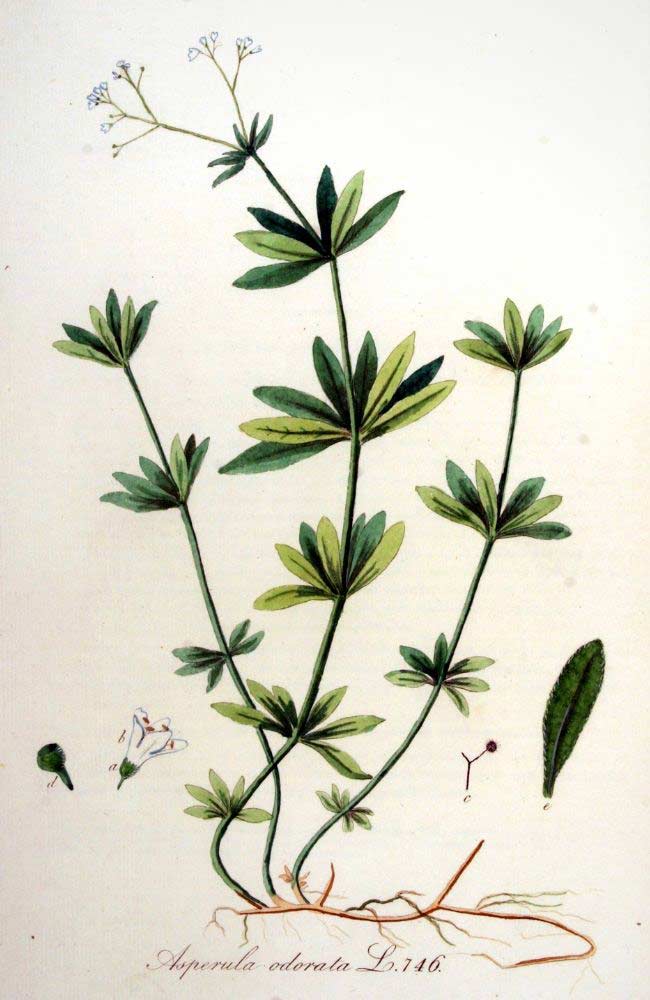
Galium odoratum: Botanical illustration
Previously, sweet woodruff was named Asperula odorata before being renamed Galium odoratum. This name comes from the Greek gala, which means milk, as several species have the property of curdling milk. The name Asperula comes from the Latin asper: rough, as several species are equipped with stiff hairs. In French, it is sometimes called “Swiss tea,” “queen of the woods,” or “little lily of the valley.”
Sweet woodruff is known to be a medicinal plant with relaxing and anti-stress properties. It aids digestion, calms the nervous system, and helps combat insomnia. It is mainly used in infusions, but can also be used to flavour drinks and desserts. It is also made into a liqueur: Waldmeister. After being harvested, sweet woodruff releases a pleasant scent of freshly cut hay, which intensifies as the foliage dries. For this reason, dried leaves can be placed in a wardrobe to scent linen and deter moths.
Galium verum is nicknamed “milkweed” because it was indeed used as rennet to curdle milk and produce cheese. It also has medicinal properties: it is diuretic, antispasmodic, healing, and calming… It is used in decoction or infusion, but also externally.
Asperulas are small herbaceous plants, not very tall, but often take on a spreading habit. Generally, they measure less than 50 cm in height. They spread through their running rootstocks, from which emerge soft, herbaceous, sometimes rough stems. Sweet woodruff thus forms a charming carpet in the undergrowth. Its stems have a quadrangular section. Those of Galium aparine are covered in stiff hairs that allow it to cling.
The foliage of sweet woodruff is splendid: it forms star-like patterns along the stem, and it has a beautiful emerald green colour that reflects light. The leaves are whorled, meaning that several leaves are attached at the same level on the stem. They are fine and elongated, measuring up to 5 cm in length, and are grouped in whorls of 6 to 9. The edges of the leaves bear small stiff hairs.
The leaves of Galium verum are smaller and less conspicuous than those of sweet woodruff. They are very fine, linear, and are gathered in groups of 8 at each node.

The starry foliage of sweet woodruff
The leaves of sweet woodruff are generally evergreen, while Galium verum is deciduous: its foliage disappears for winter and regrows in spring.
Sweet woodruff flowers in spring, typically in May-June. It then bears charming small pure white flowers, which are grouped in terminal cymes, located at the top of the stems. The inflorescences resemble the umbels of the Apiaceae family. They consist of small star-shaped flowers, measuring only 4 to 6 mm in diameter. These have four petals arranged in a cross and fused into a tube at the base. In the centre, there are four stamens and a pistil. The petals are surrounded by a calyx formed of four lobes (fused sepals). In spring, the white flowers of sweet woodruff bring a lot of brightness to the undergrowth!
The Galium verum, on the other hand, offers a long summer flowering, which extends from June to September. It bears long clusters consisting of a multitude of small yellow flowers! They are smaller and more numerous than those of sweet woodruff. They are also formed of four petals arranged in a cross.
The flowering of Asperulas and Galium is fragrant and melliferous, appreciated by bees and other pollinating insects.
After being pollinated, each flower gives way to two small rounded fruits, equipped with hooked hairs. They cling to the fur of wild animals as they pass by the plant, allowing the seeds to be dispersed!

The flowers of sweet woodruff, Galium verum, and Asperula taurina ssp. caucasica (photos: Björn Traeger / Björn S. / Jerzy Opioła)
The main varieties of Asperula
The Most Popular Varieties
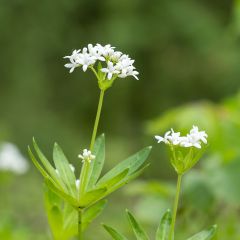
Galium odoratum
- Flowering time May to July
- Height at maturity 20 cm
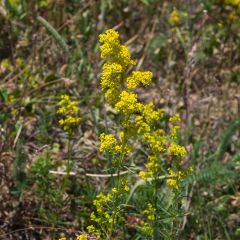
Galium verum
- Flowering time July to October
- Height at maturity 50 cm
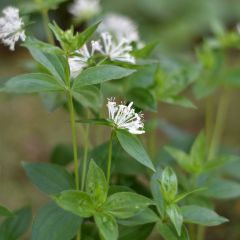
Asperula taurina
- Flowering time June, July
- Height at maturity 40 cm
Discover other Asperula
View all →Available in 1 sizes
Available in 1 sizes
Available in 2 sizes
Available in 1 sizes
Planting
Where to plant?
Sweet woodruff is a woodland plant, so it thrives in shade or partial shade! Its leaves may get damaged by the scorching sun. It requires fresh, fertile soil rich in humus, like that found in forests! It prefers deep, light, and loose soils. It also has a preference for slightly acidic soils.
Plant it in a spot where it has room to spread: for example, avoid placing it between other small perennials in a border. As it forms a groundcover, it needs space around it! Ideally, it should be planted in woodland, at the foot of trees and bushes, but you can also plant it along a north-facing wall. Sweet woodruff is perfect for occupying an area of the garden where little intervention is needed, a space allowed to evolve naturally.
Galium verum has different growing conditions: it enjoys the sun (but also tolerates partial shade), and well-drained soils, preferably dry. It prefers calcareous and sandy soils. Its deep roots and rootstock allow it to withstand drought.
Sweet woodruff and Galium verum are both quite hardy and can be grown without issue throughout France.
When to plant?
We recommend planting sweet woodruff in spring, in April-May. The most important thing is to avoid periods of frost or extreme heat.
How to plant?
For a more attractive effect, it is better to plant sweet woodruff in groups rather than individually.
- Start by placing the pot in a basin filled with water to rehydrate the substrate.
- In the meantime, prepare the ground by weeding and loosening the soil. Mix well-decomposed compost into the earth, and dig small planting holes.
- Remove the sweet woodruff from its pot and plant it. If you are installing several, maintain a distance of about 20 to 30 cm between the plants.
- Replace the soil all around and gently firm it down with the palm of your hand.
- Water generously.
Continue to water in the weeks following planting to ensure good establishment.
Entretien
Water until the woodruff is well established. After that, it will manage on its own: it doesn’t need any care and is not susceptible to diseases or parasitic insects. However, you can add some well-rotted compost each autumn to enrich the soil. If the conditions are right, you will see it gradually spread over time.
Harvesting and Using Woodruff
Harvest the flowering tops of Sweet Woodruff in early spring, in April-May, as soon as the flowers begin to bloom, using a knife (avoid uprooting the plant!). Then, dry it by spreading it on absorbent fabric or paper in a dry, airy location. It is after harvesting that Sweet Woodruff releases a true scent of freshly cut hay.
Be careful to dry it properly: if it moulds, the coumarin it contains will transform into dicoumarol, a toxic molecule that can cause bleeding. Keep an eye on it, and if you see it moulding or starting to blacken, do not hesitate to throw it away. In any case, it is advisable to use Sweet Woodruff in moderation and consume it in small doses.
Sweet Woodruff is known for its medicinal properties. It is mainly used in infusions (Sweet Woodruff tea). It soothes the nervous system and helps combat insomnia. It can also be used externally to relieve wounds. It is soothing and can be used to make an eye wash that treats eye inflammations (conjunctivitis, blepharitis…).
In cooking, Sweet Woodruff can be used to flavour desserts or savoury dishes. It is also interesting for flavouring drinks. You can make Sweet Woodruff syrup, as well as May Wine (also called “Maitrank”), by allowing the flowers to macerate in white wine and sugar.
Another use is to place dried Sweet Woodruff in small sachets that can be placed in cupboards to scent linen and keep moths away.
Regarding Galium verum, it also has medicinal properties: it is diuretic, antispasmodic, calming, and healing. Its flowers can also be used in cooking, for example in salads or to decorate dishes.
The roots of Sweet Woodruff and Galium verum can be used for plant dyeing: they colour fabrics red.
Multiplication
To multiply Sweet Woodruff, the most practical and quickest technique is division.
Tuft Division
You can divide clumps that have been established for several years. We recommend doing this in early spring, allowing the plant time to settle in before facing winter.
Start by digging up a clump of Sweet Woodruff, digging deep enough to retain as many roots as possible. Cut the rootstocks to separate the clump into several fragments. Prepare the ground by working the soil to loosen it and adding compost. Replant immediately (as it’s important to avoid drying out the roots), then water.
This technique works for both Sweet Woodruff and Galium verum.
Sowing
The best time to sow Sweet Woodruff is in autumn.
- Prepare a pot with seed compost, then lightly firm it and level the surface.
- Place the seeds on the surface.
- Cover with a thin layer of sieved substrate.
- Lightly firm down.
- Water gently.
- Place the pot under a cold frame, preferably in the shade.
Remember to water occasionally to keep the substrate moist until germination. Then, as soon as they are large enough to handle, transplant the young plants into individual pots.
Association
Sweet Woodruff is perfect for undergrowth, creating a very natural style ambiance, reminiscent of French forests. You can plant it with Brunnera, Solomon’s Seal, ferns, and Geranium nodosum… As these plants require little maintenance, you can place them in a part of the garden that you will allow to evolve naturally, with minimal intervention.
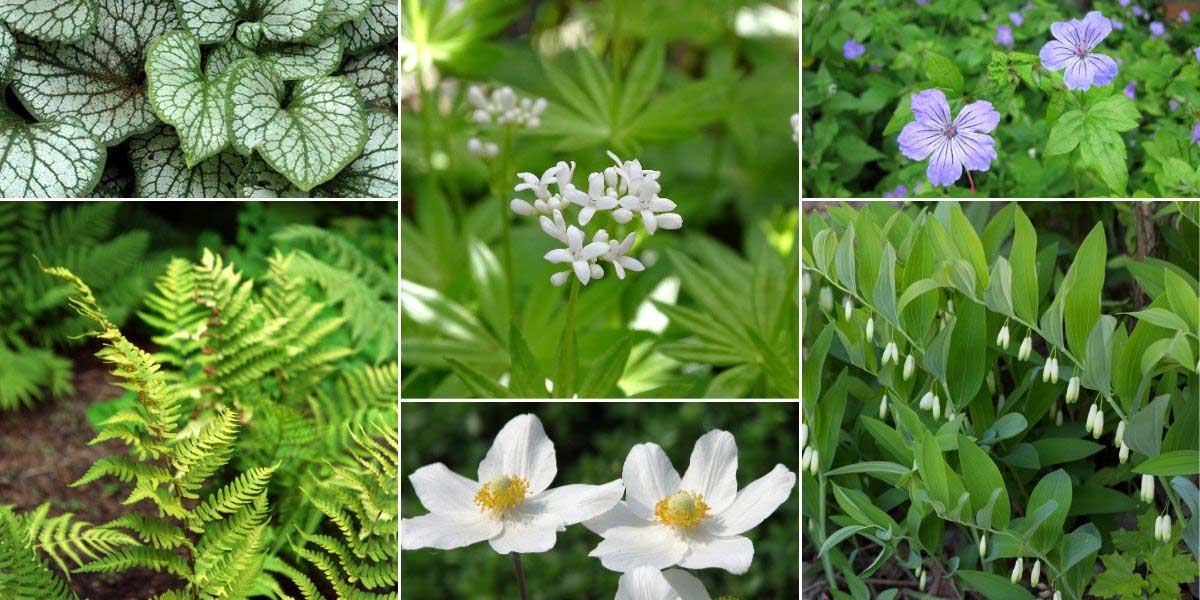
Enjoy Sweet Woodruff to create a stunning undergrowth scene! Brunnera ‘Jack Frost’, Galium odoratum, Geranium nodosum, Dryopteris marginalis (photo Kelvinsong), Anemone sylvestris (photo Kor!An), and Polygonatum odoratum (photo Oona Rälsänen)
You can highlight the small white flowers of Sweet Woodruff by pairing it with dark foliage, such as that of Ophiopogon planiscapus, Ajuga reptans ‘Atropurpurea’ or ‘Black Scallop’, or Euphorbia amygdaloides ‘Purpurea’. Create a stunning scene by pairing Sweet Woodruff with the purple leaves of the heuchera ‘Plum Pudding’. You will achieve a beautiful contrast effect, both in colour and form, with the fine foliage of Sweet Woodruff adding lightness against the broader, more massive leaves of the heuchera.
The Galium verum will also find its place in a naturalistic garden, but in an open, sunny environment! It requires good light and relatively well-draining soil. You can plant it with perennial flax, centaury, meadow sage, cosmos, echinaceas… Also integrate grasses for the lightness and volume they provide. For example, you can enjoy the delicate flowering of Briza media or the majestic inflorescences of Calamagrostis acutiflora.
Galium verum can also be integrated into a rockery or a mineral-dominant garden. Pair it with plants that prefer well-draining soils and can tolerate drought. You might plant it with Gaura, lavender, Phlomis fruticosa, or Eryngium.
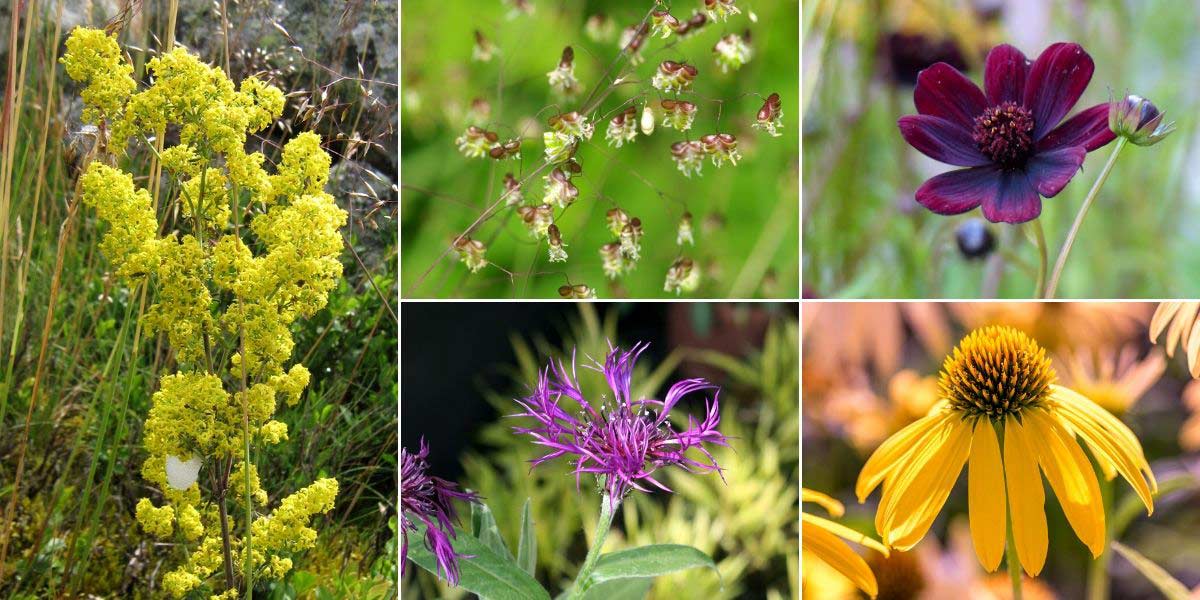
True Bedstraw is ideal in a naturalistic garden! Galium verum, Briza media (photo Bartosz Cuber), Cosmos atrosanguineus, Centaurea montana ‘Amethyst Dream’, and Echinacea purpurea ‘Summer Breeze’
Useful resources
- Discover our range of Asperulas
- A superb pairing idea for shade, featuring Sweet Woodruff and Heuchera ‘Plum Pudding’
- Advice sheet: 5 plants that repel wasps
- Advice sheet: 6 perennials for a north-facing garden
- Subscribe!
- Contents
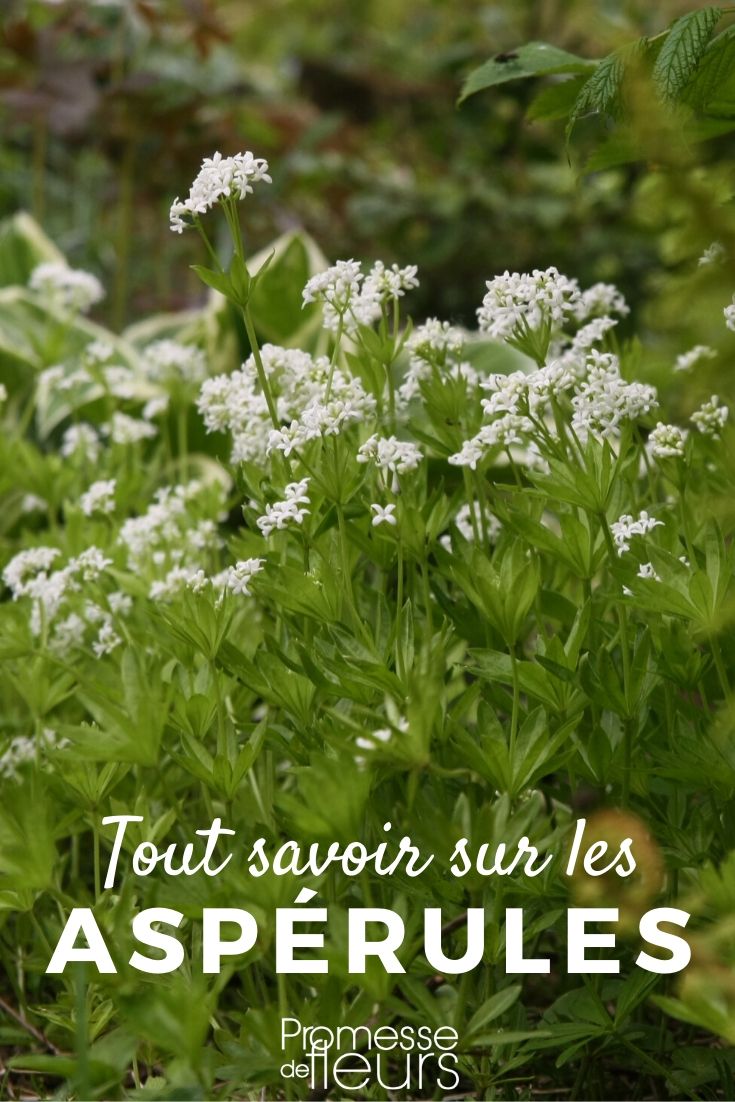



































Comments